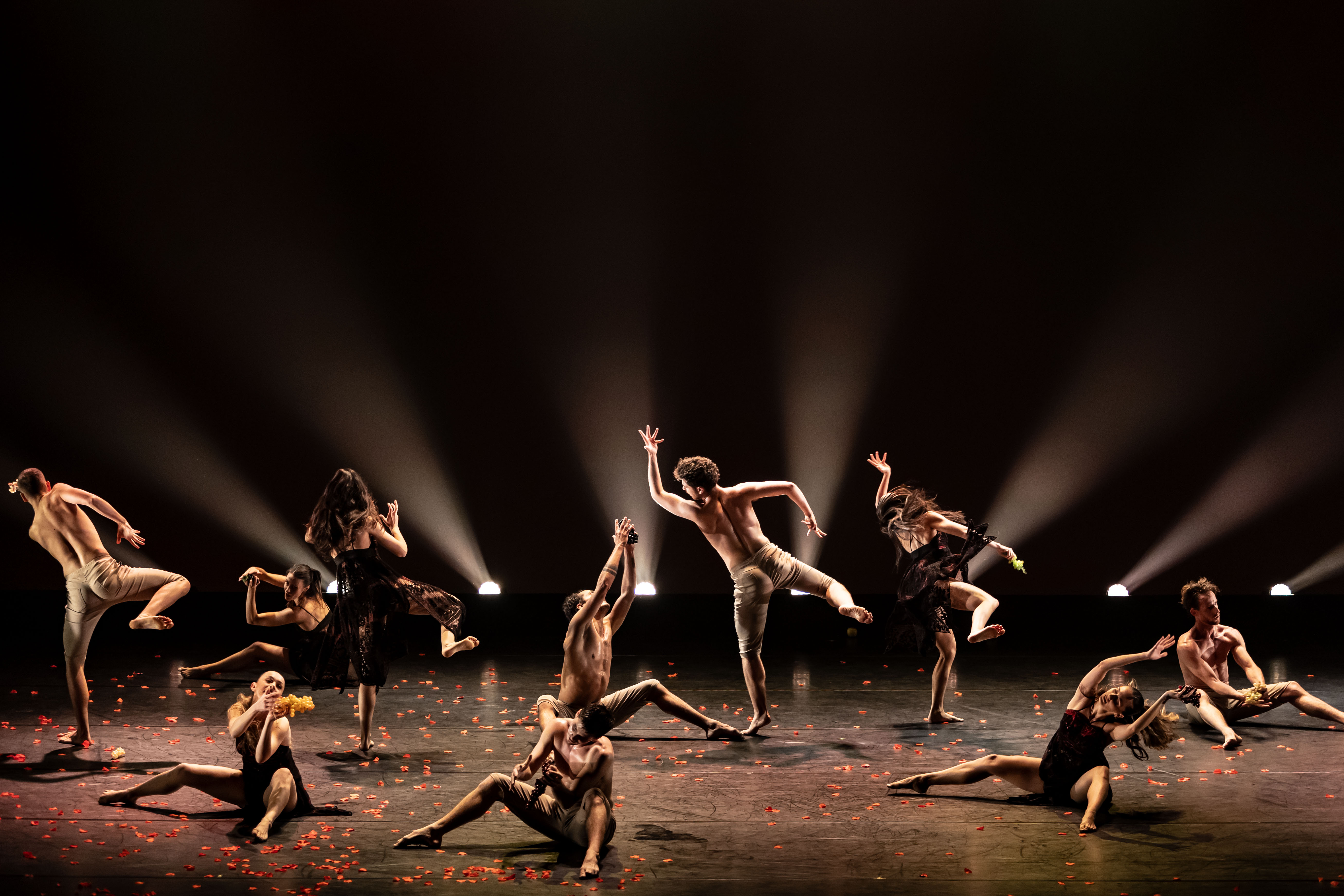On April 25, 2024, I attended the dance performance “Carmina Burana” by Kamea Dance Company.
A spectacular and captivating show, filled with beauty and grandeur, intense and energetic—a true experience for the eyes, ears, and soul.
“Carmina Burana” is a secular dramatic cantata in an ancient style, composed by the German Carl Orff in 1935-36. It is a modern musical work full of contrasts, set to medieval texts from a 13th-century collection of songs. On one hand, it was written by monk students, yet it is filled with songs of revelry and debauchery. It features powerful and rich music with choral, church, and operatic singing. The gradual musical development mirrors the games of courtship and the characters’ progression, culminating in a release of freedom, spiritual and physical love.
The impressive, bold, and captivating choreography by Tamir Ginz perfectly aligns with the music, capturing every note and movement to tell a complete story about courtship games, temptations, eroticism, desire, passion, love, youth, instincts, and the battle of the sexes. It includes solos, duets, women’s dances, men’s dances, full ensemble performances, and more. In some dances, various elements are incorporated (apples, grapes, masks, costumes, and other props) that add a “spice” to the atmosphere.
The dancers’ extraordinary performance is truly awe-inspiring. Perfect harmony and movements precisely synchronized to the music and singing. They dance together or separately with long, graceful movements—sometimes seductive and sensual, sometimes provocative and instinctual, sometimes playful and light, sometimes soft and tender, and at times powerful and intense. They intertwine, unite, and separate, dance in circles, in groups, gaze into each other’s eyes, express emotions, lift up and pull down—sometimes controlling, sometimes controlled.
The costumes are beautiful and vibrant. At the start of the performance, the female dancers wear black lace dresses against a red backdrop, while the male dancers are dressed in long black garments. Slowly, a female dancer in a long red dress with a wide hemline enters the stage, gradually dominating the scene. As the performance progresses, the costumes slowly shed away—the female dancers appear in sheer black dresses, and the men in light trousers without tops. By the end, everyone is left in bright white undergarments. Once again, the dancer in red with her mesmerizing presence returns to the stage. In these two dramatic moments, at the beginning and the end, the magnificent “O Fortuna” is played along with powerful choral singing.
Kamea’s “Carmina Burana” was first created in 2007 for the major festival of Cyprus, “Kypria,” where it was performed before an audience of about 5,000, accompanied by the Hungarian National Symphony Orchestra, opera soloists from Budapest, and 200 choir singers. The piece was later invited by the Chinese Ministry of Culture for the cultural events of the 2008 Beijing Olympics and has since been performed by Kamea Dance Company worldwide, achieving great success. From time to time, it returns to Kamea’s regular repertoire in Israel, and this time it returned for only five performances (April 22-24, 2024). Ahead of this renewal, Ginz decided to make updates, breathing fresh life into the work with bolder, more daring choreography and newly designed costumes (by Aviad Armon) and lighting (by Shai Yehudai).

